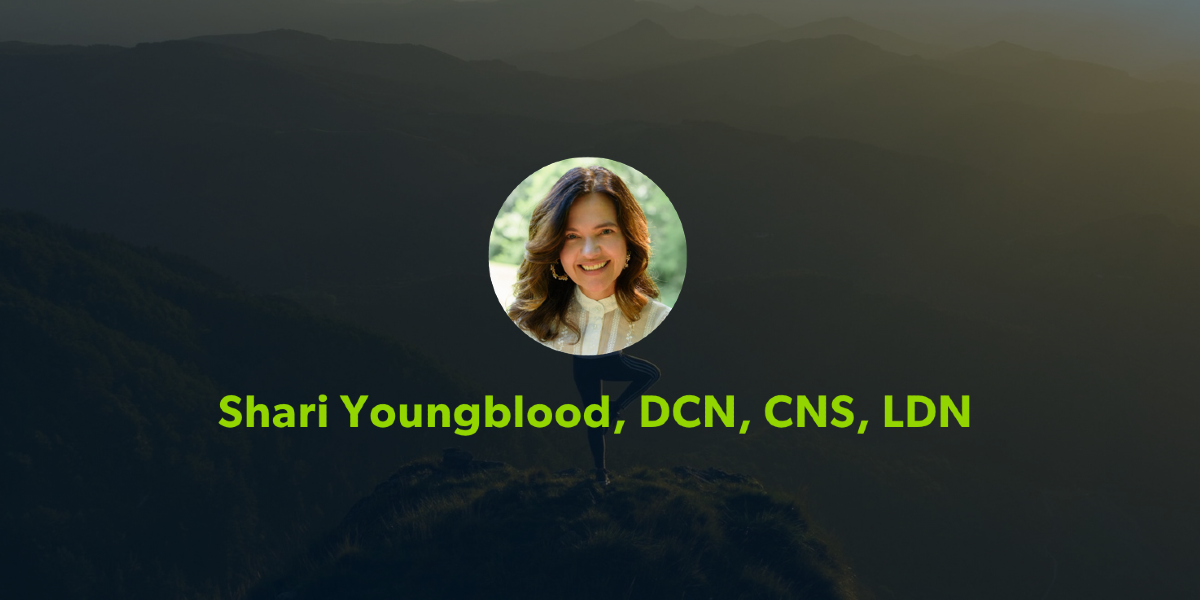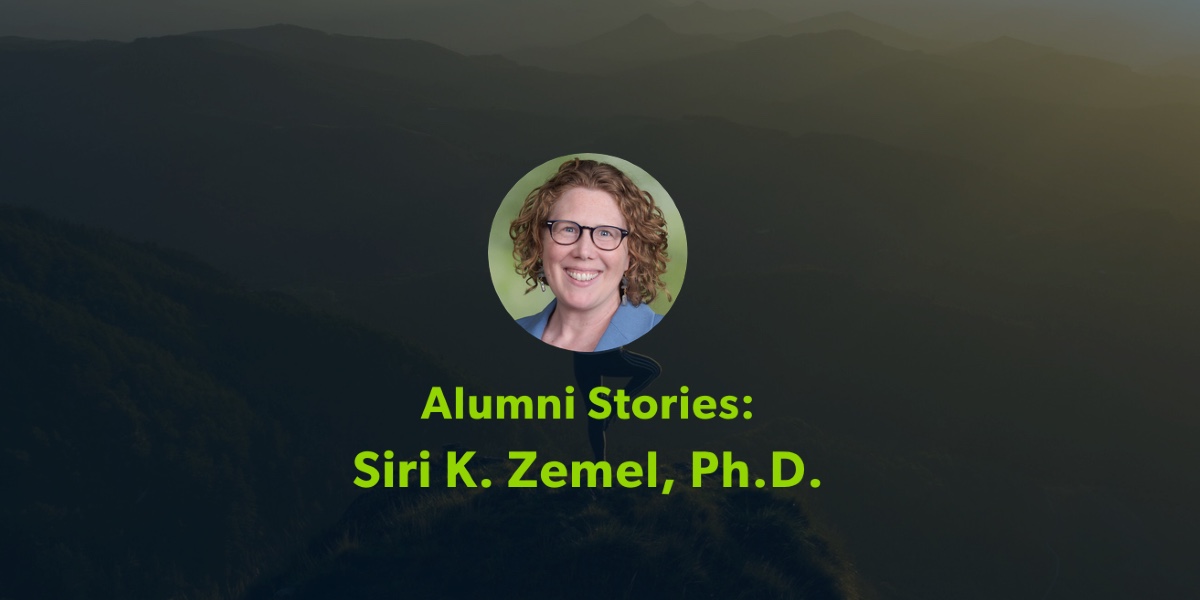Workplace wellness has most recently been synonymous with lunchtime yoga classes, smoking cessation programs, free healthy snacks, and even afternoon naptime. Employers have offered more and more benefits, but have these programs actually led to wellness? What is true workplace wellness? And what does it look like now during the COVID-19 pandemic?
As this crisis continues to challenge our health care system and economy, companies need to take care of their employees now more than ever. Millions of people are currently working remotely, and in a digital space, traditional HR efforts to offer wellness initiatives either don’t translate or lose efficacy. And as we come up against this existential threat, together, it’s going to take a lot to combat the mental health crisis accompanying this pandemic.
Defining what true workplace wellness is and how it can help employees requires an examination of creativity and leadership, a reconsideration of what “balance” means, viewing work and life as one integrated experience, and encouraging others to bring their full selves so they can do their best work.
We unpack both the theory and the practice of wellness at work with input from Saybrook University board member Gloria Chance, Ph.D., and President Nathan Long, Ed.D.
THE THEORY: GLORIA CHANCE, PH.D.
Since the 1970s, U.S. and U.K. corporations have taken an approach to work-life balance that treats work and personal and family life as equal. This approach resulted in stress to the individual when an attempt at these balances were difficult or illusive.
The COVID-19 pandemic is an opportunity for us to rethink not only how to find balance but also how to integrate our lives so that work, life, family, and health are one holistic experience. This approach will encourage a healthier and holistic individual as well as result in a more innovative and creative workforce but will require changes for individuals and dynamic changes for organizations and work policies. Leadership must make this shift strategically. As Elliot Ackerman, a contributing opinion writer for The New York Times, wrote: “There is antidote to our fear. It’s called leadership.”

The logical and the creative
Society, over the centuries, has increasingly shifted its focus from internal (being introspective) to external (ego-based). As humans have evolved, we have moved into a “scientific culture that has increasingly surrounded us—and some would say imprisoned us—for the last hundred years (and) sees the world in terms of analysis, quantification, symmetry, and mechanism” (Briggs & Peat, 1999, p. 5).
Leaders must shift from this scientific culture that embraces analysis, quantification, and mechanism to one that embraces and combines creative attributes in an effort to cultivate openness, learning, imagination, emotion, and meaning.

Only 20% of leaders operate out of the creative mind, which is the leadership imperative.
The phrase “work-life balance” implies that there’s a formula that can make the experience just right. But life is not logical. Thus, a more holistic approach has better outcomes for all stakeholders. Ulrich and Ulrich argued that a holistic approach creates a “workforce that is competent, committed, and that contributes positively, but most importantly, these employees love to come to work.”
As the CEO of a management consulting firm focusing on expanding our creative minds, I believe that integrating the logical and creative parts of our thinking and emotions with strong inner health while also powering the imagination will drive our ability to enhance our performance and potential both at home and at work.
Both shifts in the leader and employee toward work-life integration begins an important, agile, and collaborative partnership that requires new skills and thinking. “Leadership is what you do with people, not to them” (Mathew & Gupta, 2015, p. 76).

The role of creativity
Years ago, I became fascinated with creativity, trying to figure out how it works and how I can drive others to be creative as a repeatable process. My research says that we’re all creative—we just haven’t been taught how to tap into it. I found that when people are creative and are able to use creative problem solving at work, amazing things happened: increased performance, better attitudes, more connection to self and others, increased teamwork and collaboration, better products and services, and expanded thinking to solve problems. However, only 20% of leaders operate out of the creative mind, which is the leadership imperative. The collective consciousness of leaders is not complex enough to provide the leadership needed to lead the cultural and systemic change needed to compete; creative or higher is required. (Anderson & Adams, 2016)
Traditionally leaders try to apply old ways of thinking to something new and ultimately fail. I believe this is the challenge we face regarding work-life integration. As Einstein stated, “We cannot solve our problems with the same level of thinking that created them.” This applies especially today when deciding how to incorporate wellness into the workplace in the context of our changing paradigm. Creative problem solving is required to create models and approaches that are adaptable and lean enough to support the shift to an adaptable and dynamic work-life integration culture. According to Jerome, 2013, “Leaders who can satisfy employees’ self-actualization needs are the most effective leaders. This enables organizations to fully utilize employees’ ability and potential to enhance the overall productivity and effectiveness of the business." This is the leadership call to action.

Breaking free: work-life integration
Work-life balance has been a mantra really since the 1970s. While it helped improve work culture at the time, it also forced people to feel like they had to choose one or the other—that they could never have both work and life simultaneously. That way of thinking separates us from ourselves, both psychologically and individually.
The opportunity we have with work-life integration is the creation of a holistic experience that supports both life and work, to support an individual’s entire experience. This will require leaders to create a culture that will not only support work, but will introduce holistic, creative, collaborative, and meaningful interactions that lay the foundation for all humans’ increased productivity at work as well as new energy and possibilities for their individual lives.
Individuals tend to hide their creative side during their day jobs, trying to keep who they are at home and who they are at work separate. Work-life integration enforces that you don’t have to make a choice. Teammate positive emotion and engagement is increased when we are encouraged to design work in a way that supports responsibilities at home. There is no one size fits all, so the need for openness and collaboration becomes the foundation for creative thinking to solve problems and creates a win for all.

Soft skills are the new hard skills: making the wellness shift
So how do you get people to feel comfortable enough to bring their full selves to work?
As leaders, we’re trained to keep emotions in check, but that’s the very thing that makes us robotic and builds a wall between the employee and the leader. And we can no longer afford to have walls. We must learn to build, improve, and flex our emotional and imaginative muscle. As author and researcher Daniel Goleman is often credited with saying, “Emotional intelligence is the ability to sense, understand, value and effectively apply the power of emotions as a source of human energy, information, trust, creativity and influence.”
There are times when leaders must focus on creating environments for positive engagement, and there are times when they need to stay focused on the bottom line and revenue. The humanist leader in my research is in pursuit of balance of both soft and hard skills to build an effective work-life integration experience. Leadership generally has been a sterile exercise. But leadership without emotion, heart, and soul gets us the results many organizations have today where employees generally feel disconnected from leaders. According to my experience and emerging trends, the humanist leader, armed with imagination techniques, is an instigator of change, a joiner and a bridge of things and people—connecting meaning and imagination to work communities for the good of all.
The leaders who are the most successful understand that one of the most important things in life (which will benefit work) is being able to transition to your creative self to bring your whole self to the table. When this happens, people come up with better solutions. People increase their execution and performance—they’re not operating in a robotic way and making mistakes. Because now there’s energy, sustainability, and greater teamwork, people are producing better results, not just individually but collectively.
Additionally, embracing creativity and imagination has health benefits that reduce stress, decreasing days lost at work and driving higher productivity, engagement, and personal authority and agency. Expressive arts, mindfulness, and stress reduction approaches can provide further expansion of this leadership shift. This shift will begin the journey to true wellness that puts the human experience at the center, propelling us toward sustainability, resilience, and expanded thinking and creative problem solving for a better experience and world. But more than anything, our challenges today can be improved by seeing, hearing, and supporting the humanity in us all. This requires everyone at the table to be willing to shift mindsets while increasing imagination.

When we think of our interconnectedness and the ways that we all want to connect, do you think there may be things we carry forward past this time?
Dr. Apprey: Presently, patients and family send emails, make phone calls, and message or meet via Facebook, Instagram, LinkedIn, Skype, Google Duo, and Zoom. If I have any more contact in any other forms of communication, I may turn into a patient.
I’ve always said that every day I wake up is a blessing. Everything else is a bonus. In my family, my father has always said, “learn in times of a recession.” My mother’s family has always said, “love everyone.” During this pandemic and the days ahead, I think it’s best to be grateful when we can wake up, keep learning, and keep loving regardless of the circumstances.

THE PRACTICE: NATHAN LONG, ED.D.
My first foray into wellness came out of managing the stressors of my own job and figuring out how to come into things more mindfully, more serenely, and in a more focused fashion. And that really changed my general leadership practice over the last four years in a very positive way.
So many things go through your mind as you’re trying to process work and enjoy life. Because as you live, you hear all the various voices in your head that arise from self-doubt and frustration. You get bombarded. Being more mindful helps me to capture and identify when I am going down a certain pathway whether it is in a meeting, in response to a situation, or how I was managing someone. It allows me to pause and say, “Wait a second. I need to reset and rethink.”
Taking care of myself in a more holistic way has made me be more present in my family relationships, be more effective as a father and a partner, and become a stronger leader. I’ve tried to stop the additional distractions that are out there as we’re engaging with one another, to really hone in and focus in on what’s in front of me. In that way, I can bring my full self to an interaction and actually connect with the person I am communicating with.

Re-centering and grounding
Every organization goes through difficult times. We’re living through a moment in history right now where every single individual is struggling with the ramifications of a global pandemic with COVID-19. The question for leaders everywhere is, how do we keep business going but also increase and improve faculty, student, and staff connection and morale—and take care of each other and everyone’s own unique needs?
Figuring out how people and profits interplay together in a very holistic humanistic way is crucial—they’re both essential for the other to be doing well. I can’t ensure that the Saybrook faculty and staff are OK and in a good space if we’re not doing well financially.

Part of being humanistic is recognizing yourself and what goes on inside you and those areas you need to work on so you can enhance how you show up in a situation and how that carries into your department, your organization, and ideally in your community—and embracing it.
In Saybrook University’s strategic plan, there is a strong focus on mindfulness. Not only in how we track faculty, student, and staff engagement but how we create an environment that people feel connected to. After all, the workplace is where we spend 40+ hours a week. It’s almost like your extended family, and how you show up and engage is really key to keeping up morale.
Part of what’s incredible about operating as a nonprofit is advancing a mission—especially in a university setting. Yes, the financials are important; yes, enrollment is important, but the primary goal is advancing our mission and we need everyone to be connected to what we’re doing. If I as the president or if one of our partners is not connected to what we’re trying to do, then we’re not really serving the mission.

Putting it into practice at Saybrook
One of the things that Saybrook stands for is this focus on mental health and whole health. It’s permeated the university in many ways, and it’s becoming more a part of the fabric of the institution.
A couple of weeks ago at a faculty meeting, our faculty co-chair started off with a guided imagery and mindfulness meditation moment to center the group. It was the most focused I have ever seen us. And that’s really what mindfulness is all about: what are we doing, what are we thinking in the moment, bringing ourselves or our group or the organization back into some sort of balance.
In the wake of COVID-19, Saybrook has started to offer daily Mindful Moments. Designed to be 15 minutes in length, our Mind-Body Medicine faculty have banded together to provide these sessions as a source of centering and solace in these extraordinary times. I’m so proud to be part of a community that are helping people show up better and find some peace in the world right now.
Our team is really committed to personal and professional growth in that regard. We’re looking to do some things around what they call gracious space. It’s at the beginning of a meeting where people go around the room and speak about where they’re at. It’s an opportunity to both receive positive affirmation or empathy and then from that moment create the space for individuals to start engaging productively, because everyone’s bringing their whole selves to a situation.
Part of being humanistic is recognizing yourself and what goes on inside you and those areas you need to work on so you can enhance how you show up in a situation and how that carries into your department, your organization, and ideally in your community—and embracing it. That recognizes the humanity of the situation rather than just the cog-and-the-wheel mentality.
We’re evolving as a university to think about the whole, not just the parts, and how all of these factors—financial state, enrollment, and employee and staff morale—affect the other in order to create a really dynamic great place to work. It’s figuring out how to get all those to play well together and help everyone feel connected to the outcome—because ultimately, it’s about sustaining the mission and ourselves.

Learn more about Saybrook University
If you are interested in learning more about the community and academic programs at Saybrook University, fill out the form below to request more information. You can also apply today through our application portal.
Find Out More
Recent Posts






























